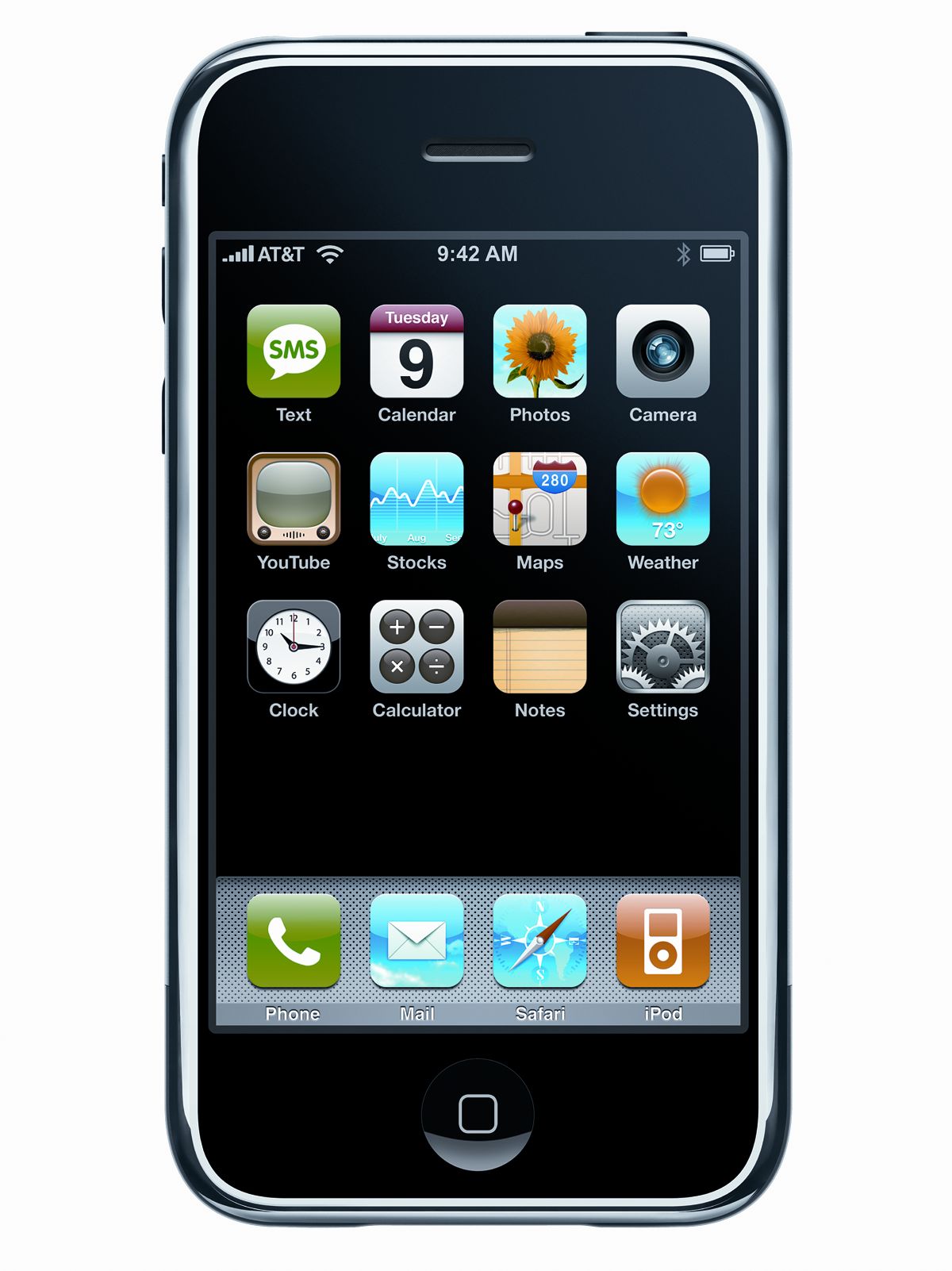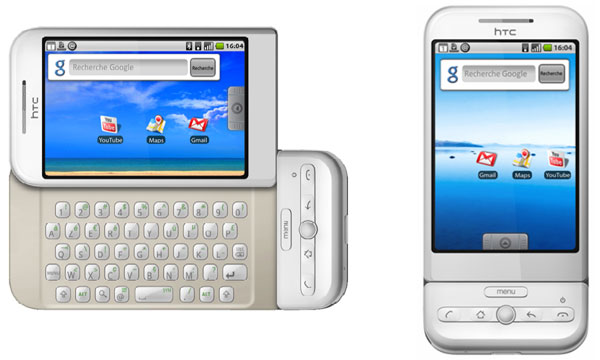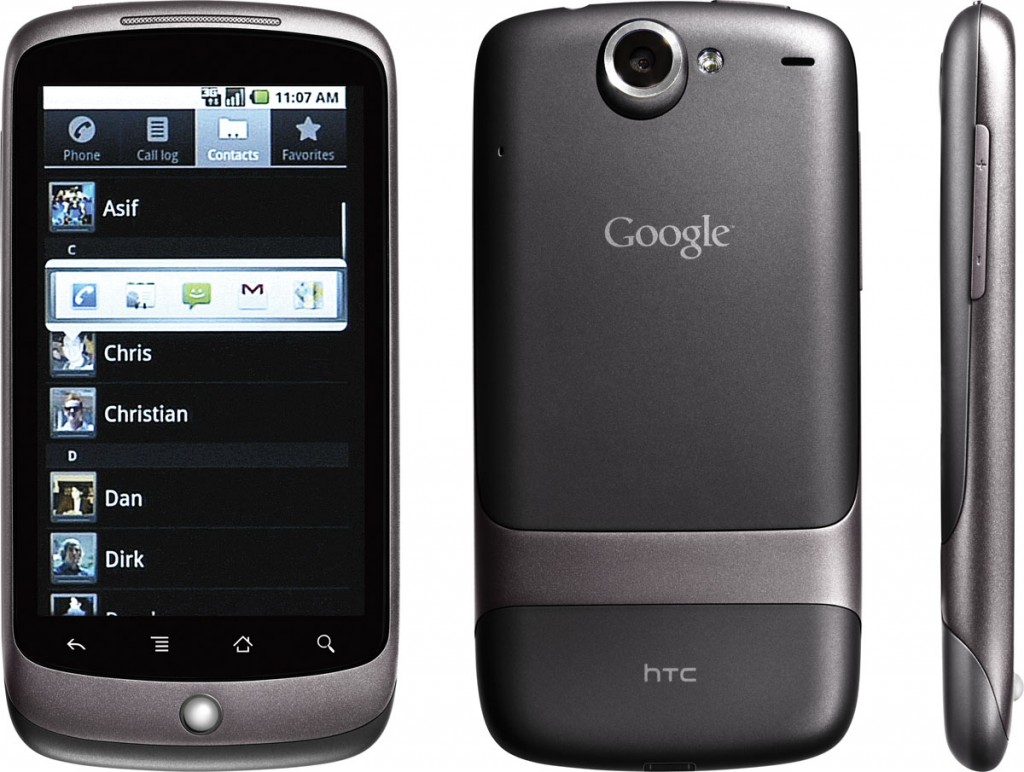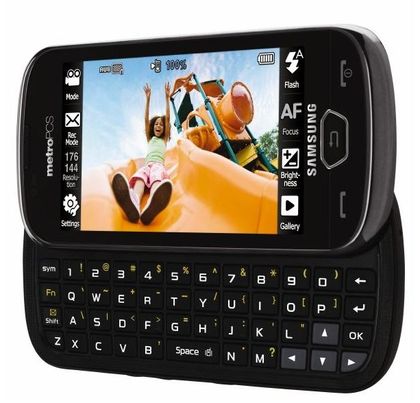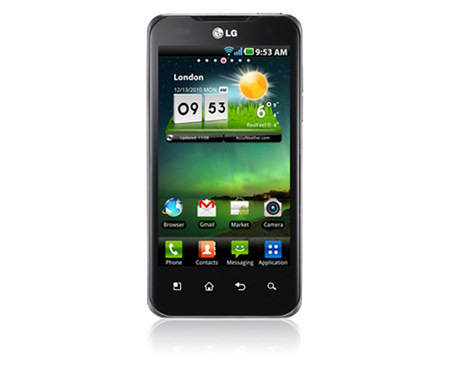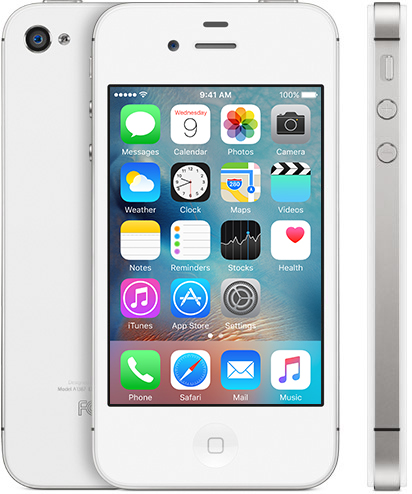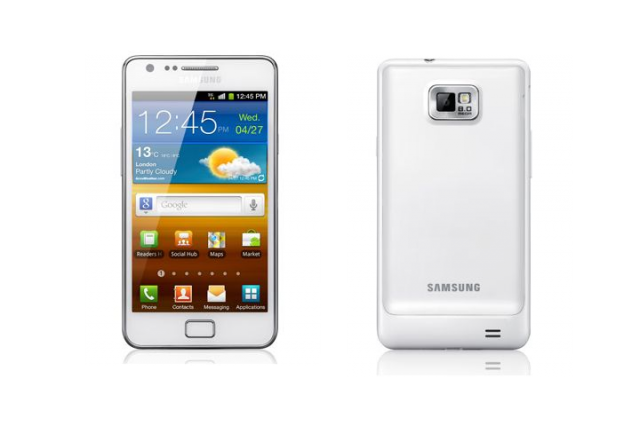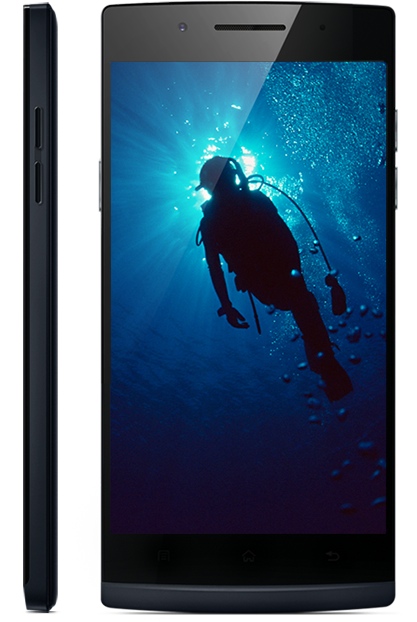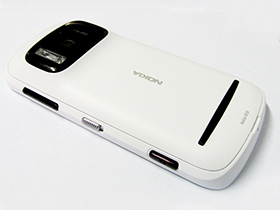31 Years Of Mobile Phones
Apple iPhone (2007)
Over the years, the cost of owning a mobile phone dropped sharply, and it became common for just about everyone to have one. At the same time, they also became increasingly sophisticated and feature rich. Although many of these phones were able to browse the Internet, the use of WAP, small screens and counter intuitive interfaces created a rather unpleasant experience. Apple recognized this problem and saw its opportunity.
The iPhone was not revolutionary for any one feature it offered; instead, it was the combination of several existing technologies bundled together into an attractive package that, most importantly, made interacting with the phone and browsing the Web an easy and enjoyable experience. The first iPhone lacked MMS, a camera and 3G connectivity. It also did not yet support third-party apps, but it nonetheless revolutionized the smartphone.
HTC Dream (2008): Enter The Android
It was in 2008 that Google unleashed its smartphone operating system, Android, into the wild. The first smartphone to use Android was the HTC Dream (G1). Its internal hardware was centered around a Qualcomm MSM7201A processor with 192 MB of RAM and 256 MB of internal storage space, which could be extended via a microSD card slot. The HTC Dream was compatible with 3G/3G+ networks, enabling reasonably high-speed Internet usage for a mobile phone. It had a HVGA (320x480) 3.2-inch touch screen display for the primary user interface, but also came equipped with a full QWERTY keyboard underneath the sliding screen.
Initially it used Android 1.1, but it had official firmware upgrades up to Android 1.6.
Nexus One (2010): Google Enters The Fray
Google released the Nexus One early in 2010, becoming the first smartphone directly marketed by Google. The phone was manufactured by HTC and was equipped with a 3.7-inch AMOLED (WVGA, 800x480) display. Its Qualcomm Snapdragon 8250 SoC contained a single-core 1GHz CPU and an Adreno 200 GPU. There was also 512 MB of RAM and 512 MB of internal storage space that was expandable via a microSD card slot. On the back of the phone was a 5 MP camera, which was rather high-end for the time. Connectivity support included 802.11g Wi-Fi, Bluetooth 2.1 and 3G HSDPA/HSUPA.
Google's plan for the Nexus One was to show other manufacturers what a smartphone should be and to grow support for its Android OS.
HTC Evo 4G & Samsung SCH-R900 (2010): 4G Arrives
2010 also saw the introduction of the first 4G networks, prompting the release of the HTC Evo 4G, the first commercially available 4G WiMAX-compatible smartphone. Not long after, Samsung's SCH-R900 Craft became the first smartphone to feature 4G LTE support. Since neither phone was compatible with the European GSM networks, they were sold almost exclusively in North America.
Get Tom's Hardware's best news and in-depth reviews, straight to your inbox.
Outside of the 4G network support, both phones were relatively average for the time. The SCH-R900 had a 3.3-inch 480x800 display and a relatively limited amount of internal storage (165 MB) that was expandable via a microSD card slot. It also featured a QWERTY keyboard. The HTC Evo 4G featured better specs, including a 4.3-inch WQVGA (480x800) display, 512 MB of RAM and 1 GB of storage space that was also expandable via a microSD card slot. The Samsung SCH-R900 used a custom OS, while the HTC Evo 4G ran Android 2.3.
LG Optimus 7 (2010): Microsoft's Smartphone Platform
At the end of 2010, LG launched the Optimus 7 (LG-E900), which was one of the first smartphones to come with Microsoft's Windows Phone 7 operating system installed. The Optimus 7 had a 3.8-inch screen capable of displaying a resolution of 800x480. It used a Qualcomm Snapdragon S1 SoC with a single-core 1GHz CPU and Adreno 200 GPU, combined with 512 MB of RAM and 16 GB of internal storage. It was compatible with 3G+ networks.
First Dual-Core Smartphone: LG Optimus X2 (2011)
Over time, the computational power of mobile phones grew slowly, but starting in 2011 smartphone performance began to progress more quickly as multi-core processors were introduced. The LG Optimus X2 became the first dual-core smartphone. It used the Nvidia Tegra 2 SoC, with two Cortex-A9 CPUs clocked at 1 GHz. This effectively doubled CPU performance, and made multitasking on phones considerably easier, however, it also negatively affected battery life. Despite this, the entire industry would move in this direction following the LG Optimus X2.
Over the next few years, companies would also produce tri-core, quad-core, hexa-core, octa-core and even deca-core SoCs in an effort to push performance higher.
Apple iPhone 4s And Siri (2011)
In 2011, Apple introduced another revolutionary feature to its iPhone product line: Siri (Speech Interpretation and Recognition Interface). Other smartphones had the ability to listen to your voice and convert it into text to save you time, but Siri took the next logical step with the ability to listen for command words and complete minor tasks for you.
The following year, Google would implement a similar personal assistant service called Google Now, but despite its ubiquity in Android-based smartphones, it is not as well known as Siri.
Samsung Galaxy S II (2011): The iPhone Killer
Following the release of the Galaxy S in 2010, the Galaxy S II is the phone that allowed Samsung to really compete with the Apple iPhone. Aimed at the high-end market, the Galaxy S II had advanced features to entice users to switch away from Apple. It used a Samsung Exynos 4210 SoC with a Cortex-A9 dual-core 1.2GHz CPU and a Mali-400MP4 GPU clocked at 266MHz. The SoC was supported by 1 GB of RAM and either 16 or 32 GB of storage space depending on the model. The rear camera was capable of recording video with a resolution of 1080p, and the phone also had a 2 MP front-facing camera. Network support included 3G HSDPA/HSUPA. The phone was a major success, helping Samsung to become the leading Android smartphone manufacturer in the world by October 2011.
Oppo Find 5 (2012): The First 1080p Display
Mobile device display resolutions also improved over time, transitioning from the limited text-only monochrome displays of the 1990s to full color high-pixel density displays capable of playing high-definition games. The first smartphone to feature a full HD display was the Oppo Find 5, which featured a stunning pixel density of 441 PPI.
Nokia 808 Pureview (2012): The 41 MP Smartphone Camera
While modern smartphones started to look more and more alike, one released in 2012 stands out from the rest. The Nokia 808 Pureview has all of the typical smartphone features you would expect in 2012, except for its powerful 41 MP camera. The phone is thicker and heavier than most contemporary smartphones as a result.
Because of its heavy focus on the camera, Nokia neglected other aspects of the phone. Its 4-inch AMOLED 640x360 (184 ppi) display was rather mediocre for 2012. The internal hardware was also underwhelming, with a single-core 1.3GHz CPU and just 512 MB of RAM. It also used the Symbian OS, which is no longer in development.
-
BadActor They have come a long way in a relatively short period of time. My first mobile phone was a Motorola bag phone with a large antennae. People would be amazed when you told them you were calling them from your car.Reply -
plasmastorm My 1st phone was an alcatel of some sort when I was about 14-15.Reply
1st phone you would recognize was the 7110 I got after that, loved that phone and would pay good money for the same shell with modern features. -
g-unit1111 My dad has had seriously nearly every single one of those dating back to the giant brick sized Motorola portable phone he got in like 1992 all the way to a Galaxy S6 which he has now.Reply -
chaosmassive I used to gaming on Nokia 3310Reply
you know, perfect score on space impact !
and snake at maximum speed !
-
AndrewJacksonZA You missed the first colour phone: the Siemens S10, launched in 1998.Reply
You included the first phone with a 1080p screen, but not the first phone with a 4k screen: the Sony Z5 Premium in 2015.
I got my first cellphone in 1997/1998. I think it was an Alcatel brick. I later inherited my Dad's Siemens S10. :-) -
10tacle My first "mobile" phone was a Motorola car version of the hand-held brick back in the late 1980s that my parents got me when I went off to college. Mobile service was spotty back then of course, even in relatively populated areas. And when I was roaming out of my service area, it was very expensive per minute....something insane like nearly a dollar a minute which in today's dollars is closer to two bucks a minute.Reply
Needless to say, we didn't yap much back then as even the contract plan cost per minute was something like $.25/minute on top of the monthly fee. In any event, it's always fun to reflect on all the old phones some of us older people have had over the decades. Even my retired four year old Android Motorola Razr Maxx smart phone can play older PC games, games that 10 years ago needed a pretty powerful build to run them on a 1600x1200 CRT monitor! -
Pat Flynn Awesome article guys, love seeing stuff like this! Historical mobile computing at its finest :)Reply -
g-unit1111 Reply17546961 said:My first "mobile" phone was a Motorola car version of the hand-held brick back in the late 1980s that my parents got me when I went off to college. Mobile service was spotty back then of course, even in relatively populated areas. And when I was roaming out of my service area, it was very expensive per minute....something insane like nearly a dollar a minute which in today's dollars is closer to two bucks a minute.
Needless to say, we didn't yap much back then as even the contract plan cost per minute was something like $.19/minute on top of the monthly fee. In any event, it's always fun to reflect on all the old phones some of us older people have had over the decades. Even my retired four year old Android Motorola Razr Maxx smart phone can play older PC games, games that 10 years ago needed a pretty powerful build to run them on a 1600x1200 CRT monitor!
My dad's car had one of these:
We thought it was state of the art back then. :lol: -
10tacle Reply17546990 said:My dad's car had one of these:
We thought it was state of the art back then. :lol:
LOL! That's exactly the Motorola design I had and mine was mounted in the center console like this, but it was after-market and not factory. Looks like Lexus got a contract with Motorola for a factory phone option. Awesome! If I remember correctly, the keys lit up in green.
Early adopter memories, heheheh.
-
g-unit1111 Reply17547042 said:17546990 said:My dad's car had one of these:
We thought it was state of the art back then. :lol:
LOL! That's exactly the Motorola design I had and mine was mounted in the center console like this, but it was after-market and not factory. Looks like Lexus got a contract with Motorola for a factory phone option. Awesome! If I remember correctly, the keys lit up in green.
Early adopter memories, heheheh.
It wasn't that exact one - that was just the first image I pulled on Google. My dad's was a Volvo and yeah the keys did light up green from what I remember. :lol:
